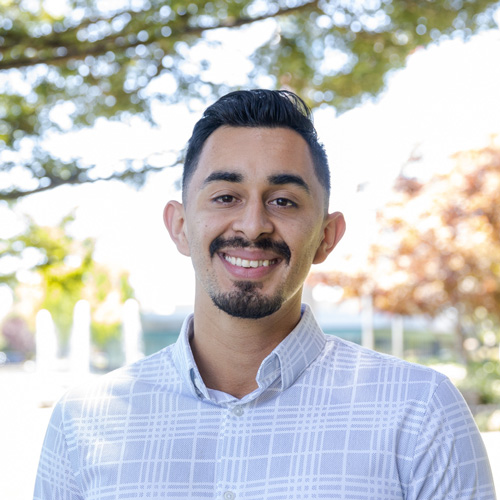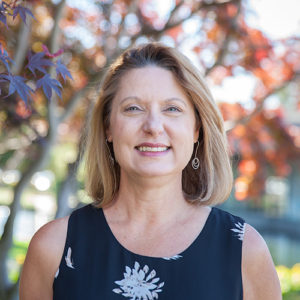
About the Environmental Education Pathways Project
The Environmental Education Pathways Project (Pathways Project) is an initiative of the Sonoma Environmental Education Collaborative (SEEC), whose mission is to catalyze cooperation between organizations to cultivate professional excellence and amplify impacts. SEEC believes that together we are more effective and efficient in increasing the depth and breadth of environmental education in the county. As a regional consortium, SEEC brings together almost all local and regional environmental education professionals from organizations, agencies, networks, and school districts.
The Pathways Project builds on SEEC’s network of providers to coordinate a cohesive countywide effort whose focus is: To significantly elevate the impact of outdoor environmental education across Sonoma County, increasing depth and breadth, and the extent to which we reach and create change in underserved communities.
The Pathways Project is profoundly grateful for the generous support of the Riddell Family. As steadfast stewards of environmental education and equity, the Riddell Family prioritizes creating a lasting impact on our youth with outdoor education learning. Through engaging conversations with the Riddell Family about advancing environmental education in underserved Sonoma County schools, an innovative idea emerged to build upon the pathways work within SEEC.
To create environmental literacy pathways, the Pathways Project will work at three levels:
- On the ground supporting the delivery of outdoor environmental education to Title 1 Schools/underserved communities;
- Within schools to build stronger relationships with teachers, school administrators and the diverse environmental education providers, and;
- Across institutions to bring resources, diverse experiences, and perspectives to create
The primary goals for the project are the following:
- Identify and pilot solutions to barriers to delivering environmental education (i.e. transportation)
- Build the capacity of each service provider to collaborate while also maintaining program delivery
- Pilot Environmental Learning Pathways in selected schools, tapping the strengths of participating service providers and working within the individual school capacity and culture
Grant Program Overview
The heart of the Pathways Project is to create a pathway of environmental learning that connects and grows environmental understanding during the elementary school years. Similar to the concepts of grades in other areas of learning (math, language arts), each year will build on the previous year, scaffolding the environmental education learning with a capstone experience in the final elementary school year. An essential element of the Pathway is outdoor experiential learning, where students engage in hands-on science, and develop feelings of belonging and connection– a sense of comfort and confidence in and from the outdoors.
SEEC is partnering with Community Foundation Sonoma County to hold and manage the funding for this three-year project, administer an annual grant program for SEEC members, and support convening and collaboration across providers and other institutions involved in environmental education in Sonoma County.
Eligible organizations can apply to receive funding for their time to participate in Pathways committees to advance the goals of this project and for their current programming at identified Pathways schools for the academic year 2024-2025. Schools have been selected based on the following criteria:
- At least 50% of students are socioeconomically disadvantaged
- Geographic distribution with a particular focus on areas identified as a higher need in The Portrait of Sonoma County
- Schools are currently being served by SEEC members, with preference given to schools being served by multiple EE providers
Grant Program Criteria
Environmental education providers are invited to apply for funding for their programs for the 2024-2025 academic year if they meet the following criteria:
1. Active participation in SEEC, defined as the following:
-
- At least one member of the organization attended at least half of the meetings from August 2023-May 2024.
- At least one member of the organization is an active member of a SEEC committee. Committees include the Steering Committee, Professional Development Committee, Youth Committee, and Pathways Committee.
- Have an updated letter of commitment on file.
2. Provide environmental education programs to students in Sonoma County during the school day. Out-of-school-time programs that take place after school or during school breaks are not eligible for funding.
3. The EE program the organization is applying for provides children the opportunity to explore nature outside of the school campus. Classroom-based programs that do not include a field component are not eligible for this funding.
4. Serving at least one identified Pathways school during the 2024-2025 school year:
-
- Albert F. Biella Elementary School
- Abraham Lincoln Elementary School
- Bellevue Elementary School
- Brook Hill Elementary School
- Brooks Elementary School
- Cali Calmecac Language Academy
- Cinnabar Elementary School
- El Verano Elementary School
- Flowery Elementary School
- Geyserville Elementary School
- Guerneville Elementary School
- Healdsburg Elementary School
- Helen Lehman Elementary School
- James Monroe Elementary School
- Jefferson Elementary School
- John Reed Elementary School
- Luther Burbank Elementary School
- McDowell Elementary School
- Meadow View Elementary School
- Miwok Valley Elementary Charter School
- Monte Rio Elementary School
- Park Side Elementary School
- Richard Crane Elementary School
- Robert L. Stevens Elementary School
- Roseland Elementary School
- Roseland Creek Elementary School
- Sassarini Elementary School
- Sheppard Elementary School
- Steele Lane Elementary School
- Taylor Mountain Elementary School
- Thomas Page Academy
- Wright Charter School
5. Can commit to participating in school-level working groups for each Pathways school the provider is serving. EE Pathways grantees will receive a $10,000 stipend for staff time to collaborate and actively participate in these working groups throughout the school year. Participation includes but is not limited to correspondence about the Project, information-sharing, and regularly attending school-level working groups.
6. Recipients of the funding are expected to provide transportation free of cost to the schools. The amount in the grant will not fully cover this, but to help increase orgs capacity to do this.
Application Timeline
Application Opens: Monday, June 10
Grant Orientation Meeting: Wednesday, June 13th at 2:00pm, and Friday, July 12th at 5:00 pm
Funding decision and notification: Week of August 19th
Funding Disbursement: September 2024
About SEEC

SEEC is an all-volunteer organization coming together since 2008 to facilitate collective impact for environmental education in the County. SEEC meets monthly and is managed by a Steering Committee of six organizations. Collectively, these six organizations reach over 65,818 (duplicated) students annually with a combined budget of well over $2M. The County had a total of 66,450 public school students in the 2020-21 school year.
To learn more, visit https://sonomacountyee.org/
This grant program is by invitation only. For more information about the Environmental Education grant program, please contact:

For questions about the online application process, please contact:

